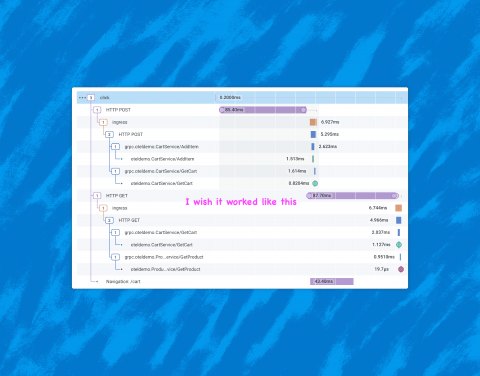Observable Frontends: the State of OpenTelemetry in the Browser
The modern standard for observability in backend systems is: distributed traces with OpenTelemetry, plus dynamic aggregations over these events. This works very well in the world of web servers. But what about the web client? This post describes the state of OpenTelemetry support for React web clients, as of early April 2023.











